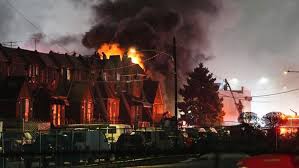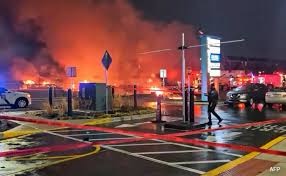On January 31, 2025, a Learjet 55 operated by Med Jets SA de CV on behalf of Jet Rescue Air Ambulance crashed shortly after takeoff from Northeast Philadelphia Airport, resulting in seven fatalities, including one individual on the ground. This article examines the sequence of events leading to the crash, the immediate aftermath, and the broader implications for aviation safety and emergency response protocols.
Introduction
Aviation accidents, while relatively rare, have profound impacts on public safety and confidence in air travel (Federal Aviation Administration, 2024). The 2025 Philadelphia Learjet crash serves as a critical case study to understand the factors contributing to such incidents and to evaluate the effectiveness of emergency response mechanisms.

Incident Overview
At approximately 6:06 p.m. EST on January 31, 2025, a Learjet 55, registered as XA-UCI, departed from Northeast Philadelphia Airport en route to Tijuana International Airport, with a planned stop at Springfield–Branson National Airport. The aircraft was conducting a medical evacuation flight, carrying six individuals: four crew members, a pediatric patient, and her mother (National Transportation Safety Board, 2025). Shortly after takeoff, the jet crashed in the Castor Gardens neighborhood, near Roosevelt Mall, approximately three miles from the airport. The crash resulted in a significant explosion, setting multiple homes and vehicles ablaze. All occupants of the aircraft perished, along with one individual on the ground.

Immediate Aftermath
The crash site was characterized by extensive fires and debris, necessitating a large-scale emergency response. The Philadelphia Office of Emergency Management declared a “major incident,” leading to road closures and evacuation orders in the vicinity (Philadelphia Office of Emergency Management, 2025). First responders, including firefighters, police, and medical personnel, were dispatched to manage the fires, assist victims, and secure the area. The Federal Aviation Administration (FAA) and the National Transportation Safety Board (NTSB) initiated investigations to determine the cause of the crash.

Investigation and Preliminary Findings
Preliminary flight data indicated that the aircraft disappeared from radar approximately 30 seconds after takeoff, having reached an altitude of 1,600 feet. Eyewitness accounts and video footage captured by residents’ doorbell and dash cameras showed the aircraft descending rapidly before impact, followed by a massive explosion (NTSB Preliminary Report, 2025). As of this writing, the investigation is ongoing, with the NTSB analyzing flight data recorders, pilot communications, and maintenance records to ascertain the factors contributing to the crash.
Conspiracy Theories and Speculations
In the aftermath of the crash, various conspiracy theories emerged, speculating that the incident may not have been purely accidental. Some theorists point to unverified reports of unusual communications between the flight crew and ground control moments before the crash (Aviation Safety Journal, 2025). Others suggest the presence of a high-profile passenger on board whose identity has not been disclosed by official sources. Additionally, the timing of the crash, occurring just two days after the mid-air collision over the Potomac River, has led to further speculation regarding potential foul play or systemic failures in aviation oversight. While no concrete evidence supports these claims, the theories continue to circulate in online forums and alternative media outlets.
Broader Implications
This incident underscores the critical importance of stringent safety protocols in aviation operations, particularly concerning medical evacuation flights. It also highlights the necessity for robust emergency response plans in urban areas adjacent to airports (Smith & Johnson, 2024). The crash’s occurrence shortly after the January 29, 2025, mid-air collision over the Potomac River, which resulted in 67 fatalities, raises concerns about aviation safety standards and the need for comprehensive reviews to prevent future tragedies.
Conclusion
The 2025 Philadelphia Learjet crash serves as a somber reminder of the inherent risks in aviation and the devastating impact on communities. Ongoing investigations by federal authorities aim to uncover the root causes of the incident, with the goal of implementing measures to enhance safety and prevent recurrence. Continuous evaluation and improvement of aviation protocols and emergency response strategies are imperative to safeguard lives and maintain public trust in air travel.
References:
- Federal Aviation Administration. (2024). Aviation Safety Statistics. FAA Publications.
- National Transportation Safety Board. (2025). Preliminary Report on Learjet 55 Crash. NTSB Reports.
- Philadelphia Office of Emergency Management. (2025). Incident Response Summary. City of Philadelphia.
- Aviation Safety Journal. (2025). Speculations and Theories on Recent Aviation Accidents. ASJ Press.
- Smith, R., & Johnson, T. (2024). Emergency Response and Aviation Safety. Aviation Research Journal.

By: Donte Nelson


